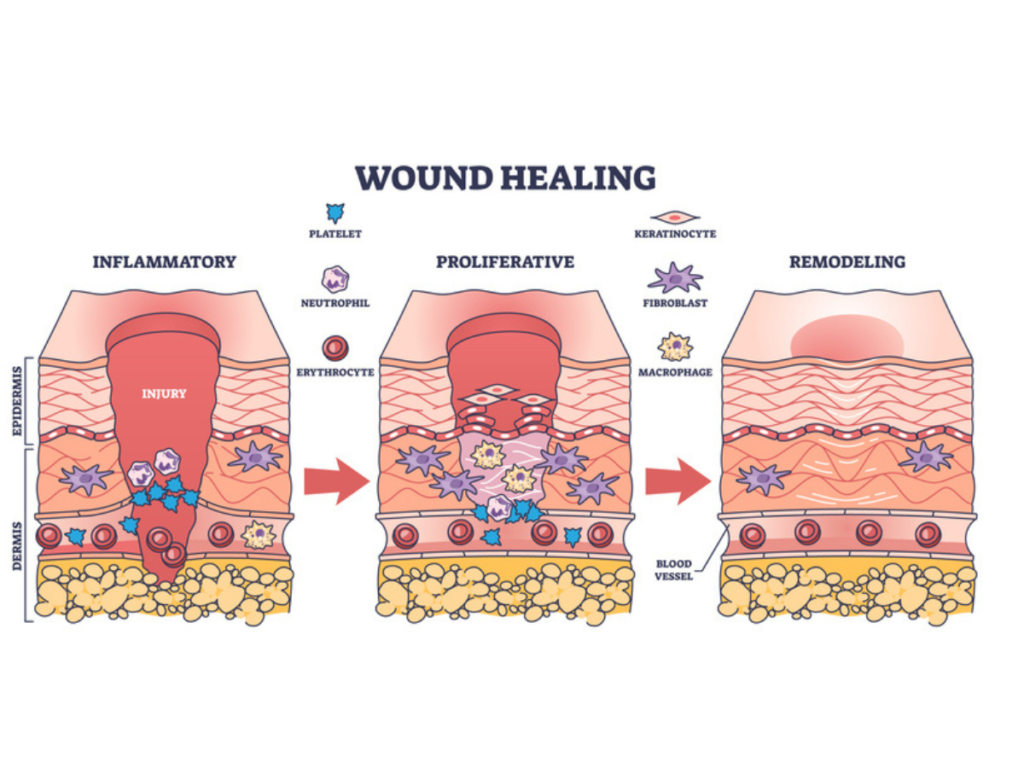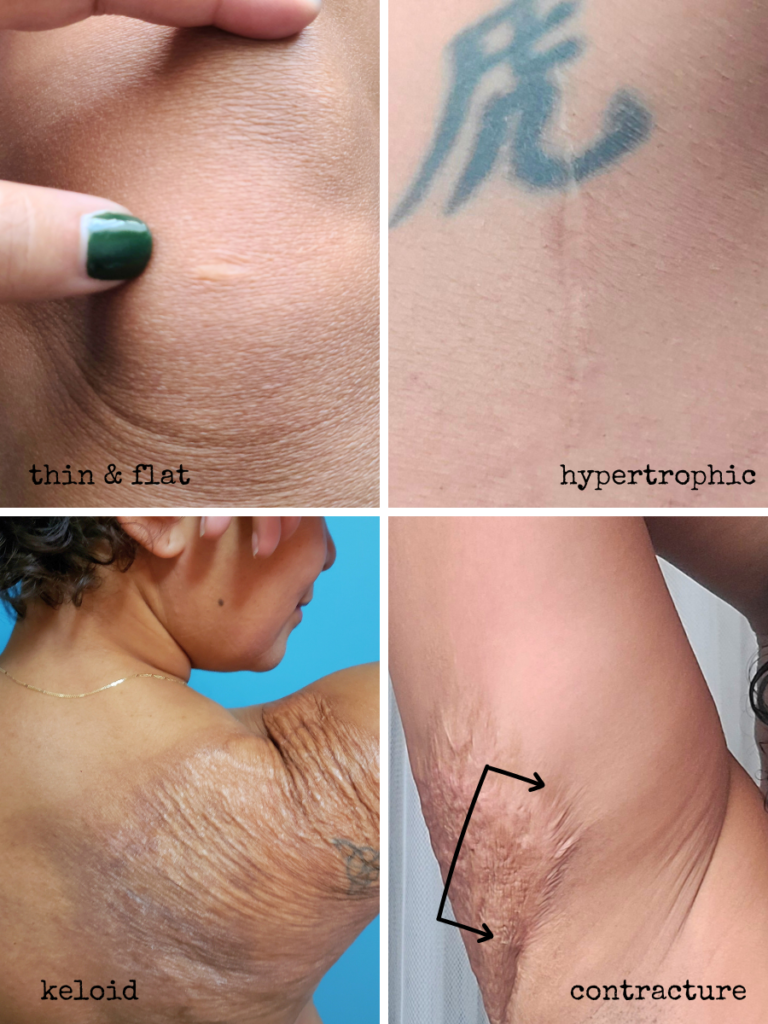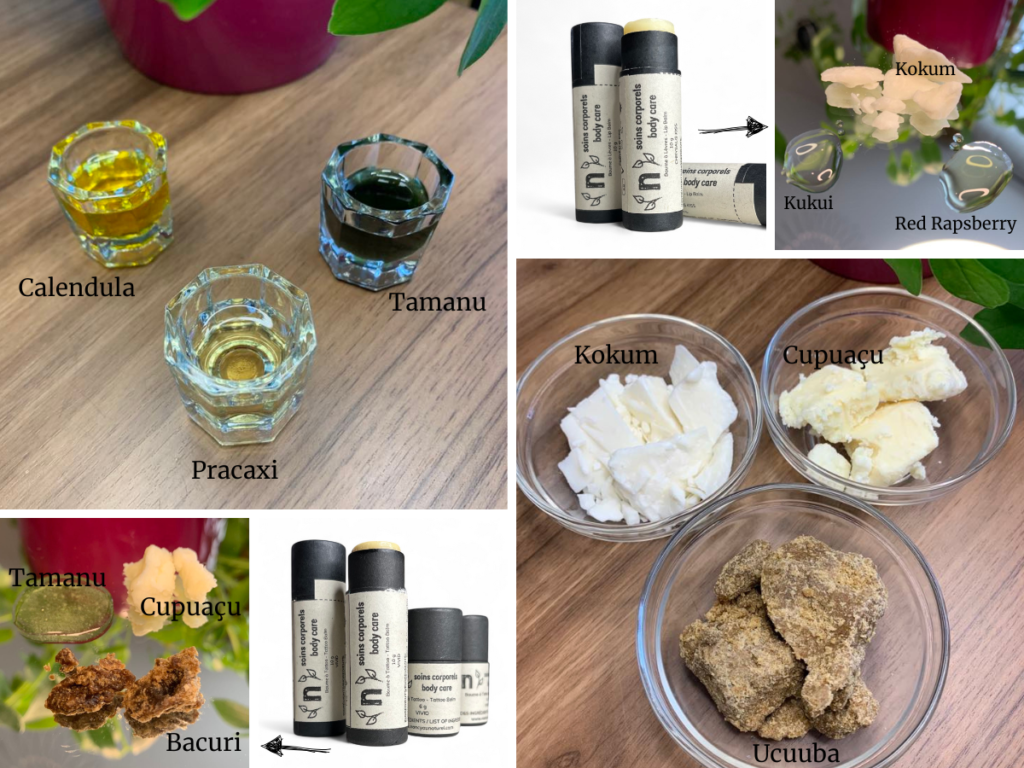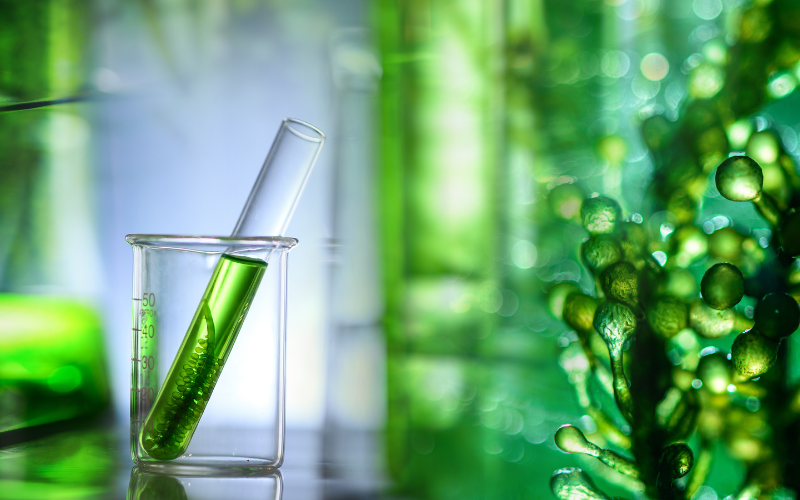The Science of Skin Healing – Nature’s Way
Introduction: Understanding Scars and the Skin’s Healing Process
Nature has always been my greatest teacher in healing. As a burn survivor who became a massage therapist and natural healing advocate, I’ve learned that true healing comes not just from understanding the science, but from embracing nature’s wisdom. Welcome to the first part of my five-part series, “The Science of Skin Healing – Nature’s Way.”
In this series, we’ll explore the remarkable journey of skin healing through both scientific understanding and natural approaches. Today, we’ll lay the foundation by understanding how scars form, the various types we encounter, and the power of natural ingredients I’ve discovered through both research and personal experience. In the upcoming weeks, we’ll delve deeper into advanced botanical remedies, healing through nutrition, targeted solutions for specific scar types, and holistic emotional healing practices.
Whether you’re dealing with surgical scars, burn marks like mine, or other skin concerns, this series is my invitation to join me in discovering nature’s remarkable ability to support our healing journey. Let’s begin by understanding the basics of how our skin heals and the natural ingredients that can support this incredible process.
What Causes Scars?
As a burn survivor, I understand how uniquely personal each scar’s story is. Our scars are influenced by where they appear on our body, how deep the original wound was, and even our own genetic makeup, age, and heritage. While surgical, burn, or acne scars each have their distinct characteristics, they all share one truth – they’re signs that our body has worked its healing magic, turning wounds into badges of resilience. While surgical, burn, or acne scars each have their distinct characteristics, they all share one truth – they’re signs that our body has worked its healing magic, turning wounds into badges of resilience.

Key points:
Types of Scars
- Thin and Flat
- Hypertrophic
- Keloid
- Contracture
- Acne
Treatment Approaches
- Non-invasive (compression, oils, lotions).
- Invasive treatments.
- ‘Wait and watch’ for 1 year.
- Natural ingredients.
- Psychological support
Key Natural Ingredients
- Kokum Butter – Regeneration & elasticity
- Calendula Oil – Collagen production
- Tamanu Oil – New tissue formation
- Pracaxi Oil – Texture improvement
- Andiroba Oil – Anti-inflammatory
Factors Affecting Scars
- Location and size of injury
- Depth of wound
- Age and genetics
- Type of injury
- Ethnicity
Types of Scars
Through my journey of healing and research, I’ve come to understand the unique characteristics of different scar types. Let me share what I’ve learned about how scars can manifest:
Think of thin, flat scars as nature’s most gentle signature – they start pink and gradually fade over time, like the one I have from a skateboarding childhood accident. These are the most common healing patterns our bodies create.

Hypertrophic scars rise above the skin but stay within the wound’s borders, often appearing red and determined in their presence. Then there are keloid scars, which are like overenthusiastic healers – they grow beyond the original injury site, especially in younger people and those with darker skin tones.
As a burn survivor, I’m intimately familiar with contracture scars. These appear after burns or significant skin loss, creating a tightness that can limit movement – a daily reminder of our body’s intense healing response.
Finally, acne scars tell their own story through various patterns – from deep ice pick marks to rolling waves across the skin’s surface. Each type shapes our skin’s landscape differently, but understanding these patterns helps us choose the most nurturing approach to care for them.
Understanding Scar Treatment Options
In my journey with scars, both personal and professional, I’ve learned there are three main paths we can take: non-invasive treatments, invasive procedures, or simply allowing time to do its work. Let me share what I’ve discovered about the gentler approaches that often serve as our first steps in healing.
Non-invasive treatments have been central to my own recovery. Compression therapy, which I experienced firsthand, uses special garments and gel sheets to support healing. Some find relief through splints or supportive devices, while others benefit from masks and clips. Natural oils and creams have become treasured allies in my healing toolkit, alongside soothing hydrotherapy sessions. Antihistamines can help manage discomfort, and importantly, I’ve learned that emotional support through counseling is just as vital as physical care.
Silicon sheeting has become increasingly popular, and while it shows promise, I believe in being transparent about what we know and don’t know. Just as with massage therapy – a practice close to my heart – some treatments work wonders for certain individuals even when scientific studies haven’t fully caught up to explain why. Through my experience, I’ve learned that healing is deeply personal, and sometimes the simple act of caring for our scars, even without definitive scientific proof, can bring meaningful comfort and improvement.
The “Wait and Watch” Approach
Most scars are best left undisturbed by invasive treatment for at least a year to allow them to mature before any judgment is made on their appearance. This monitoring period allows for ongoing assessment of appearance, symptoms, and psychological impact. Reassurance during this time is crucial. In some cases, scars are best left alone in the long term.
Natural Ingredients for Scar Healing
While the skin has a remarkable ability to heal itself, certain natural ingredients can support and enhance this process. Through my research and personal experience, I’ve found the following ingredients to be particularly effective for scar healing:
1. Kokum Butter
- Nature’s antioxidant embrace, is rich in healing fatty acids.
- A gentle sculptor of skin renewal and flexibility.
- Your skin’s cooling companion in times of irritation.
2. Cupuaçu Butter
- A natural elasticity enhancer through its precious phytosterols.
- Like dewdrops of hydration for thirsty skin.
- A protective shield of polyphenols for your healing journey.
3. Calendula Oil
- My trusted partner in calming angry skin.
- A natural collagen whisperer for deeper healing.
- Brings peace to irritated skin surfaces.
4. Tamanu Oil
- Creates new beginnings with its unique fatty acids.
- A defender against inflammation and unwanted microbes.
- Helps rewrite your skin’s healing story.
5. Andiroba Oil
- A symphony of essential fatty acids and limonoids.
- Nature’s anti-inflammatory healer.
- Helps your skin regain its natural bounce and clarity.
6. Pracaxi Oil
- Enriched with behenic acid, your skin’s nurturing friend.
- A gentle transformer of skin texture.
- Partners with your body to fade unwanted marks.
7. Tucuma Butter
- A vitamin-rich treasure of A and E.
- Quenches your skin’s thirst while supporting its strength.
- Accompanies you on the journey of regeneration.
8. Ucuuba Butter
- Protected by lauric acid’s natural defense system.
- Wraps your skin in moisturizing comfort.
- Guides your skin through its healing dance.
These botanical treasures work together like a healing orchestra, each playing its vital role:
- Delivering deep moisture to keep healing skin supple.
- Calming inflammation’s angry song.
- Supporting your skin’s natural collagen dance.
- Protecting against daily environmental challenges.
- Encouraging your skin’s inherent wisdom to heal.

Application Tips
Through my healing journey, I’ve found that the way we apply natural remedies matters just as much as the ingredients themselves. As someone who’s spent years nurturing scars, here’s what I’ve learned about application:
Treat your skin with gentle attention 2-3 times daily – consistency in care shows our body we’re committed to healing. Use tender, circular motions when massaging products in; this isn’t just about absorption, but about connecting with our healing process. Patience is your partner here – give these natural remedies several months to work their magic.
One important note from my experience: while these natural ingredients are generally gentle, our skin is uniquely ours. Always start with a small patch test on a less visible area, just to ensure your skin welcomes these new healing allies.
By harnessing the power of these natural ingredients, we can support our skin’s innate healing abilities and potentially improve the appearance of scars over time. Remember, healing is a process, and patience combined with consistent care can lead to significant improvements in skin health and appearance.
A Personal Journey: My Experience with Natural Skin Healing
As a third-degree burn survivor, my journey with scars and skin healing began at a young age. When I was just 10 years old, I suffered severe burns from boiling water. This traumatic experience not only left physical scars but also shaped my understanding of the healing process and the profound impact scars can have on one’s life.
Living with extensive scarring from such a young age, I became acutely aware of the looks of pity I would sometimes receive. However, I found a unique way to respond to these looks – by sharing a fascinating fact that connects us all. I would tell people, “Did you know that we all share the same very first scar? It’s from the cutting of our umbilical cord at birth.” This simple statement often changed the conversation entirely, helping to normalize the idea of scars and reminding others that marks on our skin are a natural part of life and growth.
My personal experience with severe burns and the subsequent healing process led me on a journey of exploration into natural skin healing methods. I began researching and experimenting with various organic ingredients to support my skin’s health and appearance. Through this process, I discovered the power of natural remedies:
- Products containing calendula helped soothe irritation and promote healing.
- Andiroba and pracaxi oil gradually improved the appearance and texture of my scars.
- Aloe vera became my go-to for any new scrapes or burns, seeming to speed up the healing process.
What I’ve learned through this experience is that our skin has an incredible capacity to heal, especially when we support it with nature’s remedies. More importantly, I’ve discovered that true healing isn’t just about the physical changes in our skin, but also about embracing our bodies and the stories our scars tell.
Over the years, my journey evolved into a mission to help others. Through my work as a massage therapist, I’ve had the opportunity to help people deal with their aches and pains, many of which were caused by injuries or day-to-day stress. But I wanted to do more, especially for those dealing with scars and skin healing issues like what I had experienced.
I asked myself, “What can I do that would provide daily positive outcomes both physically and mentally for them when they’re at home?” This question led me to explore the power of aromatherapy in healing. The psychological impact of scars, something I understand deeply from personal experience, became a driving force behind my choice of aromatic ingredients in my formulas.
By combining the physical benefits of natural healing ingredients with the psychological comfort of carefully chosen scents, I aim to create products that nurture both body and mind. My goal is to offer not just physical healing, but also emotional support and empowerment to those on their own healing journeys.
As a burn survivor, I understand the long-lasting physical and emotional effects that scars can have. But I also know the incredible resilience of the human body and spirit. Through my products and by sharing my story, I hope to inspire others to explore natural skin healing methods and to view their scars not as flaws, but as unique aspects of their personal history – testaments to their strength and resilience.

Conclusion: Embracing Natural Healing
Through my personal journey and research, I’ve come to appreciate the power of natural ingredients in supporting skin healing. While scars can have significant physical and psychological impacts, a combination of patience, natural remedies, and a positive mindset can make a substantial difference.
Remember, every scar tells a story of healing. By embracing natural healing methods, we not only support our skin’s innate ability to repair itself but also nurture our overall well-being. Whether you’re dealing with surgical scars, acne scars, or any other skin concerns, nature offers a wealth of gentle yet effective solutions.
As we continue to explore the science of skin healing, let’s not forget the importance of self-acceptance and the beauty that comes from our unique experiences. After all, our scars are not just marks on our skin – they’re testaments to our resilience and growth.
I’m excited to share that this article is just the beginning of our healing journey together. Over the next few weeks, I’ll be sharing four more deeply researched and personally tested approaches to natural skin healing. We’ll explore everything from my favorite advanced botanical remedies to the nurturing foods that transformed my own healing journey, plus specific solutions I’ve discovered for different types of scars and the emotional healing practices that have helped both me and my massage therapy clients.
If you’d like to join me on this journey, I’d love to share these insights directly with you. Subscribe to my email list, and I’ll send you each new article along with exclusive natural healing wisdom and recipes from my personal collection – the same approaches that have helped me and countless others on our paths to healing. Let’s walk this path of natural healing together.
With care and gratitude,



